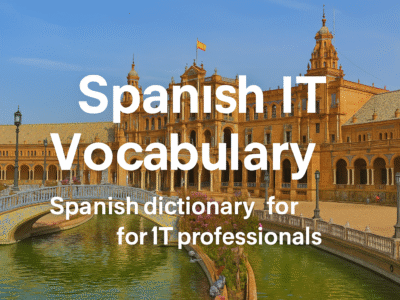Distributed Team Management 360°
Welcome to Distributed Team Management 360° It’s 2024, and your team is everywhere: from Berlin to Bangalore, from kitchen-laptops to coworking hubs. If you’re a project manager, team lead, product owner, HR partner, or entrepreneur juggling distributed or hybrid teams, …
Overview
Welcome to Distributed Team Management 360°
It’s 2024, and your team is everywhere: from Berlin to Bangalore, from kitchen-laptops to coworking hubs. If you’re a project manager, team lead, product owner, HR partner, or entrepreneur juggling distributed or hybrid teams, this course is your all-in-one survival kit — minus the overpriced water bottle.
Who is this course for?
- Leaders who want to boost productivity, cohesion, and predictability of results — without drowning in bureaucracy.
- HR and People Partners eager to build a transparent, healthy remote culture.
- Product and Project Managers looking to align goals and drive outcomes in distributed environments.
- Entrepreneurs scaling up teams across time zones, cultures, and communication styles.
What’s in it for you?
- Proven frameworks for async communication and documentation that won’t make your head spin.
- Step-by-step guides to align team goals through OKRs — and make them more than just a slide in your all-hands deck.
- Practical tools for managing time zones, cultural quirks, and language barriers (no more “Sorry, I missed this at 3am” emails).
- Real-world AI applications for planning, analytics, and coaching — not just buzzwords, but actual productivity boosters.
- Scalable practices to grow from one team to dozens, all while nurturing a culture of trust, ownership, and clarity.
What will you learn?
- How to create and automate transparent documentation and communication processes that actually work for everyone — not just the loudest person on Slack.
- How to turn OKRs from buzzword to daily team compass, with hands-on templates and real examples.
- How to design rituals and tools that respect time zones, cultures, and working styles — and keep everyone engaged.
- How to run meetings, reviews, and one-on-ones that are efficient, inclusive, and even enjoyable (yes, really).
- How to leverage AI for everything from health-check dashboards to prompt cards that make planning and coaching a breeze.
- How to respond to remote work crises, run risk audits, and implement improvements — all with a clear, actionable methodology.
Practical Takeaways
- A full set of templates and checklists (Notion, Google Docs, Miro) — from “working agreements” to retrospectives and everything in between.
- A library of 60+ AI prompt cards (for ChatGPT, Gemini, and CoPilot) to supercharge your planning, meetings, and 1:1s.
- Work hours compatibility calculators and automated “team health” dashboards that save you hours of manual tracking.
- A ready-to-use risk map and crisis response protocol — because hope is not a strategy.
- An actionable weekly audit methodology to spot bottlenecks and implement improvements right away.
This course is light on fluff, heavy on practical tactics, and sprinkled with a dash of humor (because distributed leadership is serious, but it doesn’t have to be boring). You’ll walk away with knowledge, confidence, and a toolkit that actually makes work…well, work.
Welcome to the smarter, saner way to manage distributed teams. Let’s get started!
Curriculum
- 9 Sections
- 56 Lessons
- Lifetime
- 1. Fundamentals of Distributed Work8
- 1.1DNA6 1.1 Evolution of Remote Models: Remote-First, Hybrid, Hub-and-Spoke
- 1.2DNA6 1.2 Roles and Responsibilities in a Virtual Team
- 1.3DNA6 1.3 Information → Decision → Action Cycle Without a Physical Office
- 1.4DNA6 1.4 The Belief Pyramid: Trust as a Foundation
- 1.5DNA6 1.5 Documentation as a Superpower of Distributed Teams
- 1.6DNA6 1.6 Performance Metrics: Output vs. outcomes
- 1.7DNA6 1.7 AI audit of the current operating model
- 1.8DNA6 1. Quiz3 Questions
- 2. Async communications and documentation8
- 2.1DNA6 2.1 Principles of “adequate latency” and SLA response rules
- 2.2DNA6 2.2 Formats: text, screencasts, RFCs, PRD reviews
- 2.3DNA6 2.3 Structure of an effective written message
- 2.4DNA6 2.4 Async meetings in Loom and Claap: when & how
- 2.5DNA6 2.5 High-stakes channels: the critical path of information
- 2.6DNA6 2.6 AI recap: autosummaries and action points from long threads
- 2.7DNA6 2.7 Knowledge unit tools: Wiki 2.0, crawlers
- 2.8DNA6 2. Quiz3 Questions
- 3. Collaboration tools and workflows8
- 3.1DNA6 3.1 Kanban vs. Scrum vs. Shape Up for distributed teams
- 3.2DNA6 3.2 Git flow, PR policies and code review in 24/7 development
- 3.3DNA6 3.3 Integration of CI/CD notifications into a single information layer
- 3.4DNA6 3.4 Standards for task and specification design
- 3.5DNA6 3.5 Automatic checklist bots in Slack, Teams, Telegram
- 3.6DNA6 3.6 AI assistants in Jira, Linear, ClickUp: prioritization by data
- 3.7DNA6 3.7 “Zero-Hero” guide: launching a new workflow in three days
- 3.8DNA6 3. Quiz3 Questions
- 4. OKR navigation and goal alignment8
- 4.1DNA6 4.1 What distinguishes OKR from KPI and SMART
- 4.2DNA6 4.2 Results tree: business → function → individual
- 4.3DNA6 4.3 Remote quarterly planning process
- 4.4DNA6 4.4 Check-in rituals: weekly scorecards and risk review
- 4.5DNA6 4.5 Progress visualization tools (Notion, Gtmhub, Fibery)
- 4.6DNA6 4.6 AI generation OKR drafts and automatic health-score
- 4.7DNA6 4.7 Anti-patterns of “OKR-Tetris” and how to avoid them
- 4.8DNA6 4. Quiz3 Questions
- 5. Cultural awareness and time zones8
- 5.1DNA6 5.1 Hofstede model and practical application in meetings
- 5.2DNA6 5.2 Alignment of core-hours: UTC-compatibility matrix
- 5.3DNA6 5.3 Rituals of cultural hours: demo-fika, virtual coffee, “show & tell”
- 5.4DNA6 5.4 Holiday policies and flexible schedules
- 5.5DNA6 5.5 Asynchronous team-building: formats and budget
- 5.6DNA6 5.6 AI-bot-translator of context and nuances
- 5.7DNA6 5.7 Cultural adaptation plan for a newcomer
- 5.8DNA6 5. Quiz3 Questions
- 6. Productivity, engagement and well-being8
- 6.1DNA6 6.1 Pulse surveys and eNPS index: frequency and interpretation
- 6.2DNA6 6.2 Early-warning signals of burnout
- 6.3DNA6 6.3 Design of flexible development plans (IDP)
- 6.4DNA6 6.4 Format of effective one-on-one
- 6.5DNA6 6.5 AI coach: generating growth plans and SMART goals for employees
- 6.6DNA6 6.6 Gamification of progress and public kudos systems
- 6.7DNA6 6.7 Practice of “communication hygiene” and digital detox
- 6.8DNA6 6. Quiz3 Questions
- 7. Leadership and coaching in a distributed environment8
- 7.1DNA6 7.1 Remote leadership styles: situational vs servant
- 7.2DNA6 7.2 TRUST + ALIGN + EMPOWER model
- 7.3DNA6 7.3 Techniques for facilitating difficult conversations online
- 7.4DNA6 7.4 Conflict management and “disagree & commit” principles
- 7.5DNA6 7.5 GROW coaching questions for online dialogues
- 7.6DNA6 7.6 AI parser of emotions in texts and videos
- 7.7DNA6 7.7 Leader-mentor development program
- 7.8DNA6 7. Quiz3 Questions
- 8. Automation and AI management practices8
- 8.1DNA6 8.1 “Digital boss” architecture: bots, agents, API
- 8.2DNA6 8.2 Prompt framework for auto-generation of a sprint plan
- 8.3DNA6 8.3 LLM analysis backlog and deadline forecast
- 8.4DNA6 8.4 ML-assessment of team velocity and identification of bottlenecks
- 8.5DNA6 8.5 Generative reports for stakeholders (PDF, presentations)
- 8.6DNA6 8.6 Creation of personal AI assistants based on the RAG approach
- 8.7DNA6 8.7 Control of ethics and privacy when implementing AI
- 8.8DNA6 8. Quiz3 Questions
- DNA6 FinalQuiz1










